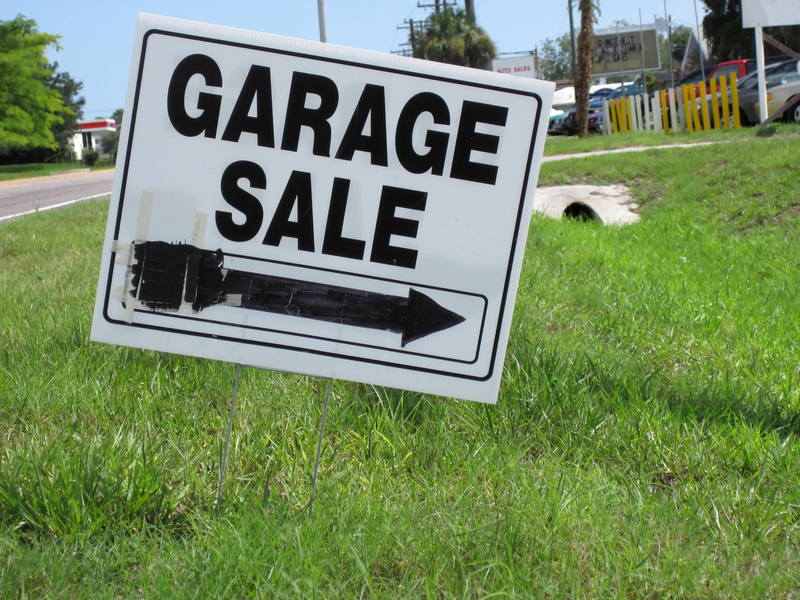The Dos and Don'ts of Disposing of Used PPE
In our daily lives, personal protective equipment (PPE) has become a necessity, especially during health crises such as the COVID-19 pandemic. Whether you are a healthcare worker, an industrial employee, or simply someone who wears masks and gloves regularly, it's vital to understand the correct methods for PPE disposal. Improper disposal poses threats to the environment, public health, and even wildlife. In this comprehensive guide, we'll detail the do's and don'ts for disposing of used PPE, provide practical disposal tips, and share insights to keep both you and the planet safe.
Why Proper Disposal of PPE Matters
PPE--such as masks, gloves, gowns, and face shields--protects users from infection and contamination. However, after use, these items can become carriers of pathogens. Improper disposal of used PPE can lead to:
- Spread of infectious diseases
- Harm to sanitation workers who handle waste
- Pollution in oceans and waterways
- Endangerment of wildlife that might ingest or get entangled in PPE
As the use of disposable PPE rises, so does the risk of environmental and health issues. Understanding the dos and don'ts of PPE disposal is now more important than ever.

Types of PPE and Their Environmental Impact
Masks
Disposable masks, such as surgical masks and N95 respirators, are made from layers of plastic fibers. If not disposed of correctly, masks can break down into microplastics, endangering land and marine ecosystems.
Gloves
Most gloves are made of latex, nitrile, or vinyl--substances that do not decompose easily. They can linger in landfills and water bodies for decades and may be mistaken for food by animals.
Protective Clothing & Face Shields
These items are often made from polypropylene or similar plastics. Because their quantity is rising, the correct disposal of such single-use PPE is crucial to avoid environmental build-up.
The Dos: Safe and Responsible PPE Disposal
Implementing proper PPE waste management practices helps minimize risks to you and the ecosystem. Here are the primary practices for safe PPE disposal:
1. Do Place Used PPE in a Dedicated Waste Bin
Assign a specific trash bin for PPE at your home, workplace, or public place. This should have a lid and a liner (plastic bag) to minimize contamination and facilitate transport.
2. Do Handle Used PPE Safely
- Wash your hands thoroughly before and after handling used PPE.
- Use a paper towel or gloves to handle used PPE if possible.
- Avoid touching your face or other surfaces after contact with used PPE until you've washed your hands.
3. Do Seal Used PPE Properly Before Disposal
Place used PPE inside a plastic bag, tie it securely, and then dispose of it in the dedicated bin. Sealing reduces the risk of contamination and exposure for sanitation workers.
4. Do Check Local Guidelines
- Some areas offer special PPE disposal instructions, including separate collection for biomedical or hazardous waste.
- Hospitals and clinics usually have protocols for staff and patients; always follow these rules in professional environments.
5. Do Consider Reusable Alternatives
Where possible, choose reusable fabric masks and washable gowns. Clean them according to health guidelines. This reduces waste and is more eco-friendly.
6. Do Educate Others
Inform your family, friends, and coworkers about the importance of safe PPE disposal. Collective action has a greater impact.
7. Do Dispose of PPE if Damaged or Soiled
Never attempt to wash or reuse single-use PPE. Always dispose of PPE that has been contaminated, torn, or compromised in any way.
8. Do Support PPE Recycling Initiatives
A small but growing number of organizations now collect and recycle PPE. If such programs exist in your area, participate actively.
The Don'ts: Common PPE Disposal Mistakes
1. Don't Litter PPE in Public Places
- Discarding masks and gloves on the street, sidewalks, buses, or parks is harmful and unhygienic.
- PPE litter can clog drains and harm animals that mistake it for food.
2. Don't Flush PPE Down the Toilet
Masks and gloves should never be flushed down the toilet or drains. This causes blockages in plumbing systems and municipal sewage lines, as well as environmental pollution.
3. Don't Burn PPE at Home
- Burning PPE releases toxic fumes, including dioxins and furans, which are hazardous to human health and the environment.
- Only approved industrial facilities can safely incinerate medical waste, including PPE.
4. Don't Place Used PPE in Recycling Bins (Unless Specified)
In most municipalities, used PPE is not recyclable in standard streams and risks contaminating otherwise recyclable materials, creating hazards for recycling plant workers.
5. Don't Reuse Single-Use PPE
- Single-use masks and gloves are not designed for multiple uses. Reusing them increases infection risk and reduces their effectiveness.
- Dispose of them after use, regardless of appearance.
6. Don't Mix Used PPE With Household Recycling
PPE contaminated with bodily fluids, chemicals, or dirt must be treated as general waste, or as hazardous waste in high-risk settings (like hospitals).
7. Don't Leave Used PPE Accessible to Children or Pets
- PPE can be a choking hazard or may spread germs if chewed or played with by pets and children.
Special Considerations for Healthcare and Frontline Workers
Hospitals, clinics, and care facilities have advanced protocols for disposing of used PPE:
- Segregate waste--often by color-coded bags (e.g., yellow for clinical waste).
- Dispose of PPE in accordance with biomedical waste regulations.
- Never take used PPE out of the facility for home disposal.
- Attend regular training on the latest PPE waste disposal practices.
Environmental Solutions and Innovations
PPE Recycling Programs
With PPE waste becoming a global concern, some organizations have started PPE recycling schemes. Though still limited, they focus on:
- Processing items like masks into construction materials or energy fuel
- Innovative sterilization and shredding techniques
- Upcycling face shields into industrial products
Biodegradable PPE
Research into eco-friendly PPE alternatives is progressing. Some companies now produce biodegradable masks and gloves made from bamboo fibers, cornstarch, and other organic materials that decompose faster and more harmlessly.

Frequently Asked Questions About Disposing of PPE
- Q: Can I put used masks in my home recycling?
A: No, in most places, used masks belong in general waste. Check your local government's website for updates. - Q: Is it okay to compost biodegradable masks?
A: Only if they are certified compostable and do not contain plastics. Check the label before composting. - Q: Are there PPE collection points in public places?
A: In some high-traffic areas like airports and hospitals, special PPE disposal bins are installed. Use these when available. - Q: How can I support PPE waste reduction?
A: Switch to effective reusable PPE when possible, educate others, and support or advocate for recycling initiatives.
Conclusion: Protect Yourself and the Planet
Proper disposal of used PPE is not just about personal hygiene--it's about environmental stewardship and safeguarding public health. By following the dos and don'ts of PPE disposal, you minimize risk to yourself, your community, and the planet.
To summarize, always discard PPE in a lined, covered bin, keep it away from children and animals, wash your hands, and never litter, recycle, or flush used PPE. Consider reusable options and promote awareness about responsible PPE waste management.
The pandemic may end, but the lessons about proper PPE disposal and eco-friendly habits will stay with us. Be diligent. Be responsible. And be the reason our environment stays cleaner and safer for all.
